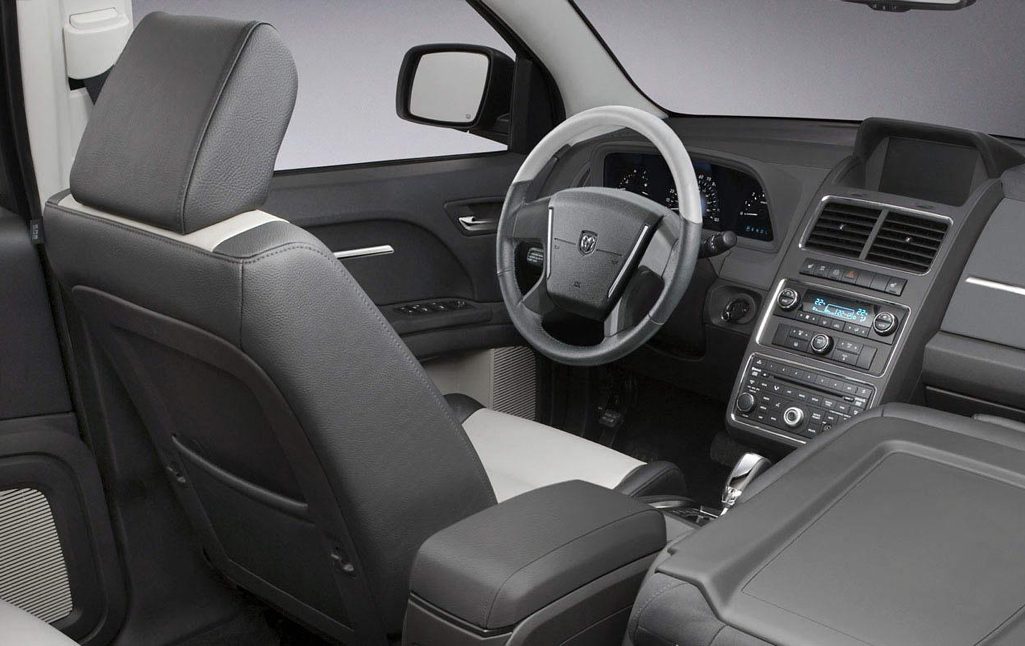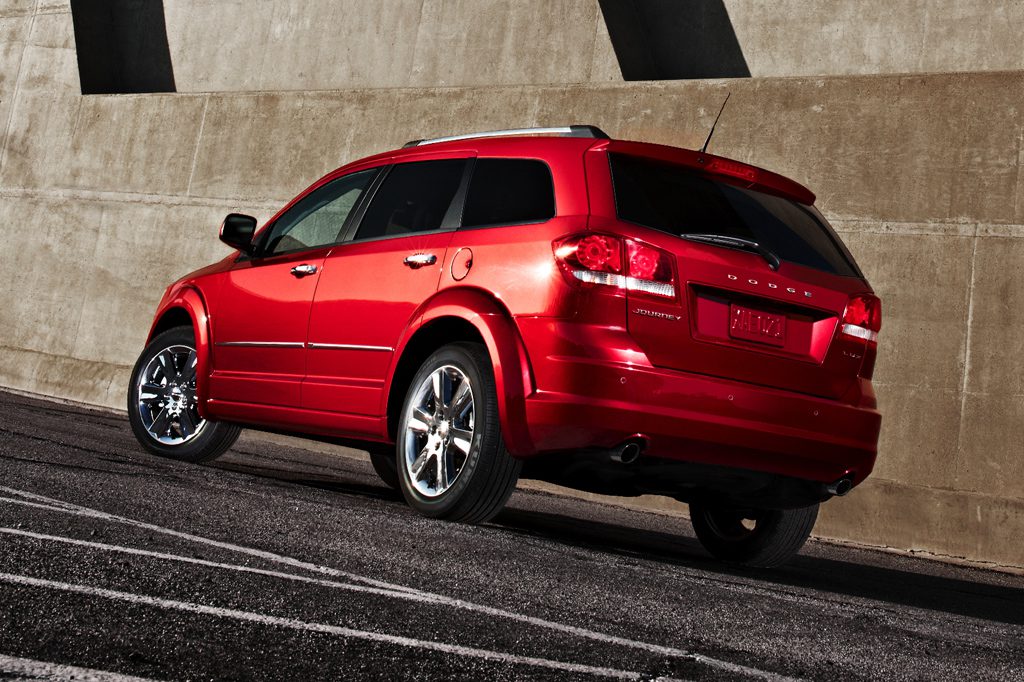| Midsize SUV; Built in USA |
|
|
| Good condition price range: $5,600 – $24,400* |

2009 Dodge Journey Front

2009 Dodge Journey Rear

2009 Dodge Journey Interior

2009 Dodge Journey Profile

2011 Dodge Journey Front

2011 Dodge Journey Rear

2011 Dodge Journey Profile
| Pros: |
|
| Cons: |
|
With Journey, Dodge finally had an SUV that appealed more to families than to folks looking for a tow vehicle. When powered by the available V6, this Recommended pick is a moderately sporty people-mover with clever storage options and, with the available third-row seat, space for up to seven. Though cabin decor is a bit austere, Dodge priced Journey aggressively as a new vehicle and made most expected safety features standard. Note that four-cylinder models have too little power and overly soft suspension tuning.
Overview
With the 2009 introduction of the Journey, Dodge finally entered the crossover SUV market. Built in Mexico, Journey slotted between Dodge’s Nitro and Durango midsize sport-utility vehicles. Unlike Nitro and Durango, Journey was a car-type SUV that sat lower to the ground and had a less off-road-capable drivetrain and suspension than those vehicles. Journey seated five in base trim and up to seven with the Flexible Seating Group that included a 50/50 split third-row seat. Three models were offered. The base SE had a 173-horsepower 2.4-liter inline four-cylinder engine with a four-speed automatic transmission, and came only with front-wheel drive. Uplevel SXT and R/T models used a 235-horsepower 3.5-liter V6 with six-speed automatic, and were available with either front- or all-wheel drive. Base SE models had 16-inch wheels. Front-drive SXTs had 17-inch wheels and a sport suspension. All-wheel-drive SXTs and all R/Ts had 19-inch wheels and a more performance-oriented suspension.
Standard safety features included antilock brakes, traction control, an antiskid system, curtain side airbags that covered all seating rows, and front side airbags. Storage features included an available flat-folding front passenger seat with an under-cushion storage bin, additional bins in the second-row foot well, and under-floor storage in the cargo area. Also available were second-row seats with built-in child-safety cushions, a beverage-chilling glovebox, and a navigation system. Chrysler’s Uconnect multimedia suite, which had a 20-gigabyte hard drive for storing pictures or digital music files, was optional. So was a navigation system that included real-time traffic information. Rivals to the Journey included the Honda Pilot, Kia Rondo, and Toyota Highlander.
Yearly Updates
| 2010 Journey Several modest changes marked the 2010 models. The highway mileage estimate for the V6 engine increased by 1 mpg, and a fuel-saver indicator with “Eco” lamp went into the instrument cluster. The optional video entertainment system got a 9-inch screen. Remote keyless entry became standard in the SE model. Active head restraints for front occupants were standard across the board. A cooled glovebox was standard on all models. Optional Uconnect included a 30-gigabyte hard drive. |
| 2011 Journey The 2011 Dodge Journey underwent a substantial freshening that included revised exterior styling, a new interior and V6 engine, and new trim level names of Express, Mainstreet, R/T, Crew, and Lux. |
| 2012 Journey Trim levels for the 2012 Dodge Journey were changed to American Value Package, SE, SXT, Crew, and R/T. |
| 2013 Journey Journey saw mostly minor revisions for 2013. The entry-level American Value Package was one of the least expensive SUVs of any size. |
| 2014 Journey For 2014, the Crew model was replaced by Limited. Otherwise, little was changed. |
